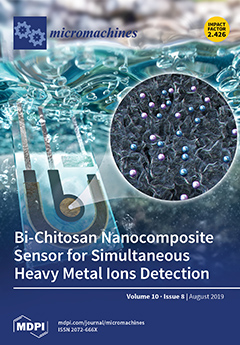Open AccessArticle
A Passive Microfluidic Device for Chemotaxis Studies
by
Maria Laura Coluccio, Maria Antonia D’Attimo, Costanza Maria Cristiani, Patrizio Candeloro, Elvira Parrotta, Elisabetta Dattola, Francesco Guzzi, Giovanni Cuda, Ernesto Lamanna, Ennio Carbone, Ulrich Krühne, Enzo Di Fabrizio and Gerardo Perozziello
Cited by 18 | Viewed by 4153
Abstract
This work presents a disposable passive microfluidic system, allowing chemotaxis studies, through the generation of a concentration gradient. The device can handle liquid flows without an external supply of pressure or electric gradients, but simply using gravity force. It is able to ensure
[...] Read more.
This work presents a disposable passive microfluidic system, allowing chemotaxis studies, through the generation of a concentration gradient. The device can handle liquid flows without an external supply of pressure or electric gradients, but simply using gravity force. It is able to ensure flow rates of 10 µL/h decreasing linearly with 2.5% in 24 h. The device is made of poly(methylmethacrylate) (PMMA), a biocompatible material, and it is fabricated by micro-milling and solvent assisted bonding. It is assembled into a mini incubator, designed properly for cell biology studies in passive microfluidic devices, which provides control of temperature and humidity levels, a contamination-free environment for cells with air and 5% of CO
2. Furthermore, the mini incubator can be mounted on standard inverted optical microscopes. By using our microfluidic device integrated into the mini incubator, we are able to evaluate and follow in real-time the migration of any cell line to a chemotactic agent. The device is validated by showing cell migration at a rate of 0.36 µm/min, comparable with the rates present in scientific literature.
Full article
►▼
Show Figures






